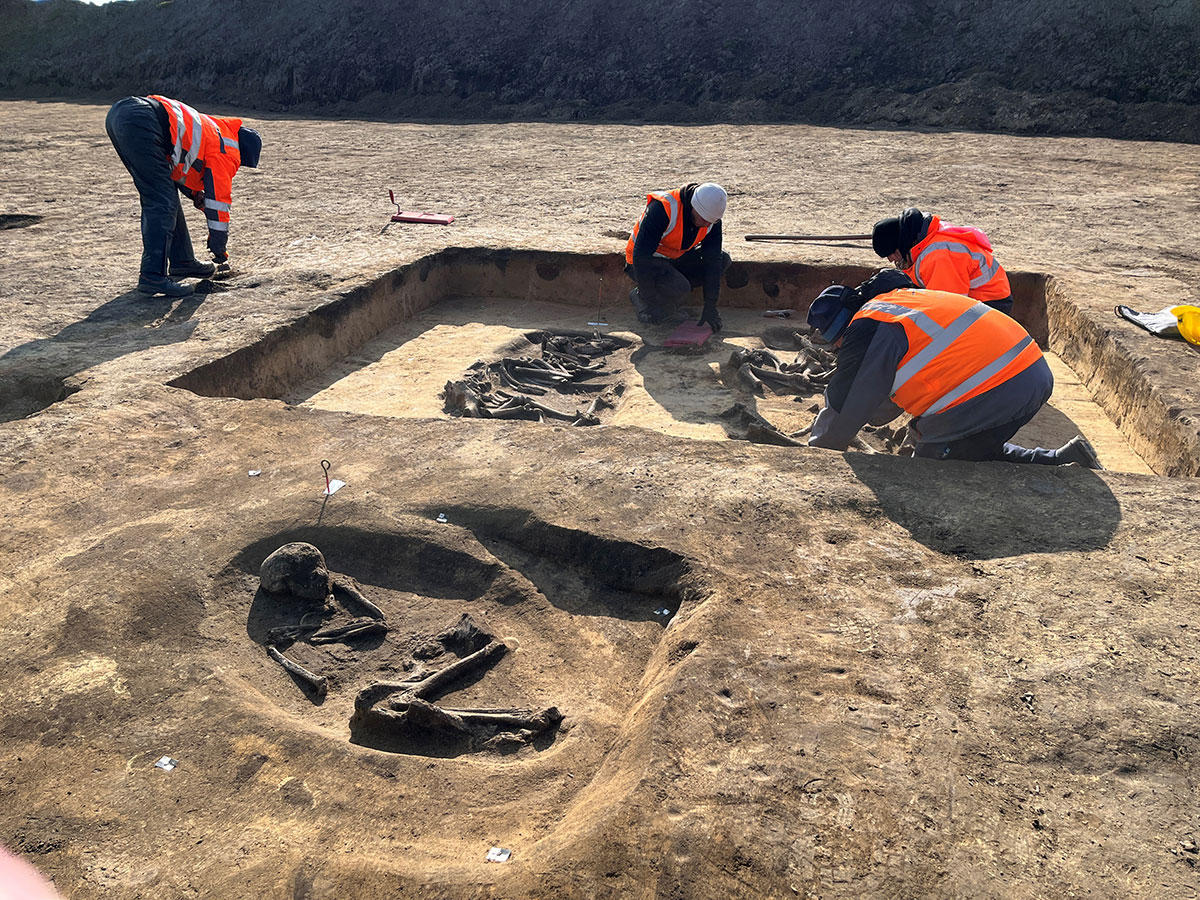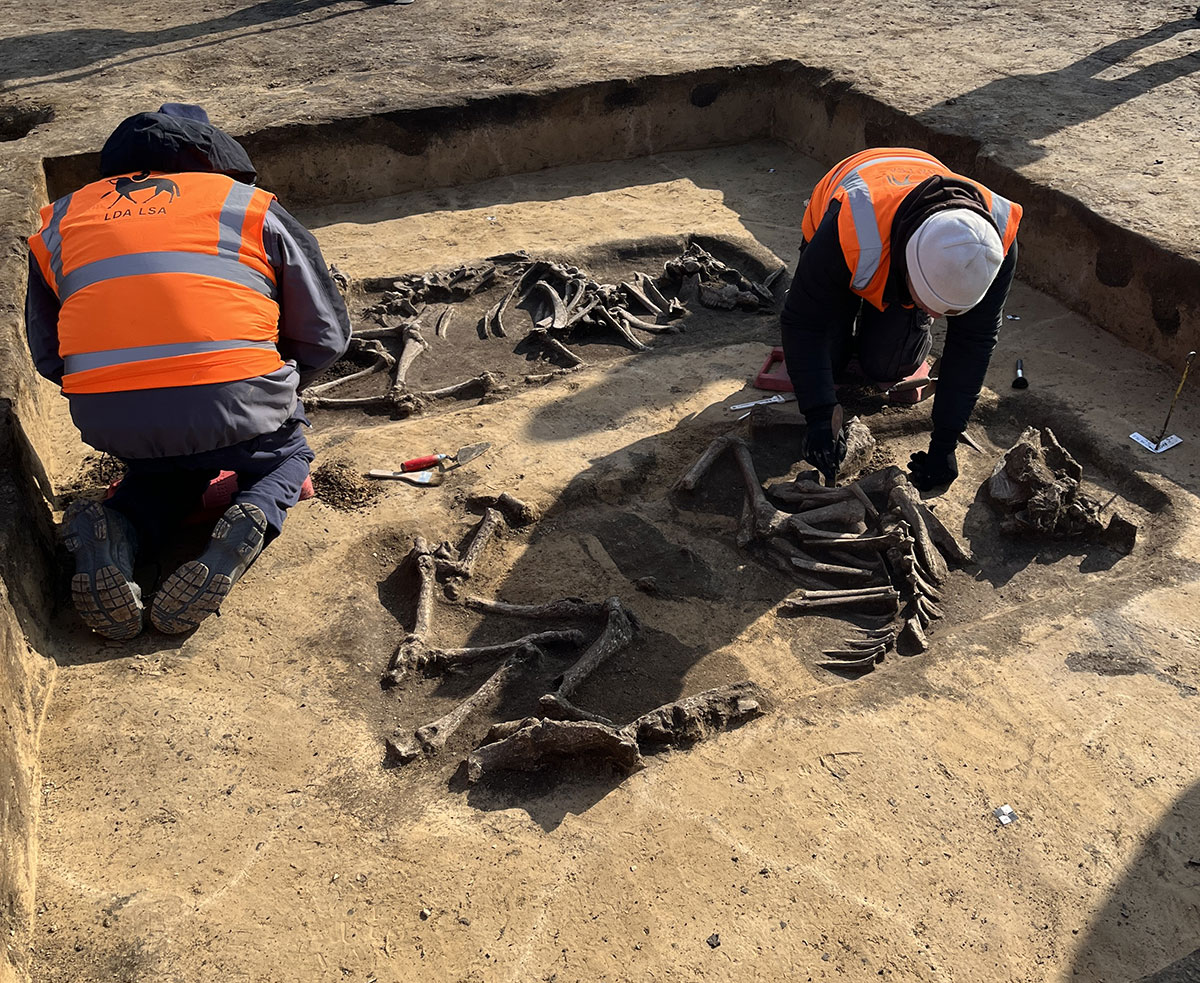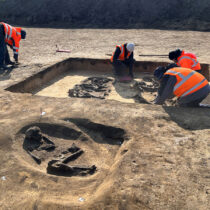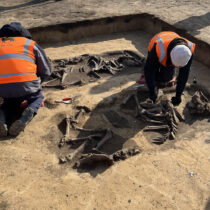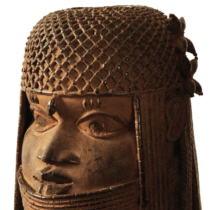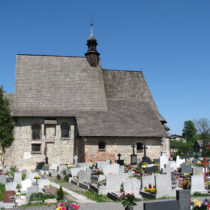Since 2023, archaeologists of the State Office for Heritage Management and Archaeology Saxony-Anhalt (LDA) have been examining large areas on the Eulenberg near Magdeburg in advance of construction activities by US chip manufacturer Intel. They discovered a complex Neolithic burial landscape. Two approximately 6,000-year-old monumental mounds that covered wooden grave chambers, each containing several burials, were located 200 m away from each other. The landscape obviously remained important for prehistoric people over a long period of time. Around 1000 years later, the corridor in between the mounds was used as a processional route where cattle were sacrificed and people buried.
An industrial area is currently being prepared for the US chip manufacturer Intel near Magdeburg. Archaeologists of the State Office for Heritage Management and Archaeology Saxony-Anhalt (LDA) have been researching the area since 2023. The work will be completed in April 2024, months before construction of the initial two semiconductor plants begins. Now the investigations have once again delivered spectacular results.
The 300 hectare large industrial park also partially includes a small hill, known as Eulenberg. Although not particularly high, it divides the otherwise relatively low-relief Börde landscape, whose fertile loess and black earth soils were an important factor for settlement already during the early Neolithic period. The area currently examined turned out to be a highly complex, long-used burial and ritual landscape.
During the Baalberg Culture (4100–3600 BC) in the middle Neolithic period, two large trapezoidal wooden burial chambers, 20 and 30 meters long, were built just 200 m apart from each other. Both were undoubtedly covered with a lot of earth; likely grave mounds were dominating the landscape.
The corridor in between was probably a procession route around a thousand years later, during the period of the Globular Amphora Culture (3300–2800 BC). Along this path, pairs of young, 2-3 year old cattle were sacrificed and buried. In one case, the grave of a 35 to 40 year old man was dug in front the cattle burials, creating the image of a cart with a driver or a plow pulled by cattle, orchestrations that are already known from other older and contemporary burials. They symbolize that with the cattle the most important possession, the security of one’s own livelihood, was offered to the gods.
Around 1,000 years later, a palisade ditch that was still 50 cm wide took up the course of the former procession route and deliberately included the larger of the two burial mounds in the approximately 3 hectare large burial landscape. It passed over the cattle burials but did not destroy them. In addition, several Corded Ware Culture burial mounds (around 2800-2050 BC) with diameters of around 10 m were discovered in around 600 m distance. The consistency in the ritual use of this part of the Eulenberg is astonishing, and the subsequent analysis of the finds promises even more interesting insights.
